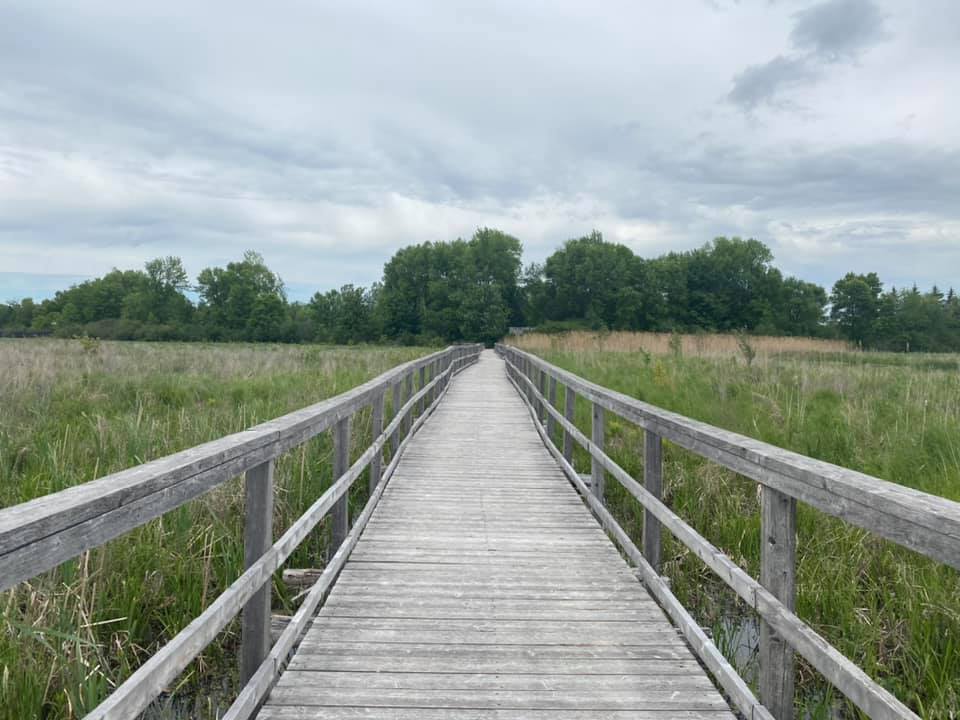OFF THE BEATEN PATH – GLENGARRY COUNTY
No history buff can resist the lure of Williamstown, and St. Raphael’s or the skirl of bagpipes at the Maxville Highland Games, but don’t forget the rest of Glengarry County – there is so much more, and most of it free!
I am going start this tour at Cooper’s Marsh, located on CR (County Road) 2, just west of S. Lancaster. With 11.5 kms of gentle trails, weaving through and over the marsh, if you are quiet and lucky enough, you may catch a glimpse of one of the more of than 130 species of birds that call the marsh home. Or you can simply stop and rest and enjoy the soft breeze in one of the trailside shelters.
Now limbered up, it is time to drive into S. Lancaster, and north over Highway 401, to take in some freshly made baked good at Henderson’s Bakery. (P.S. to be completely correct, once you cross the 401 you are in Lancaster proper.) As you are about to enter a world, where corner stores are more or less non-existent for the next few hours, I would suggest that you now take a short trip north to Glengarry Fine Cheese.
Founded in 2008, their artisanal cheeses have received international recognition. At last year’s Global Cheese Awards, held in the U.K., their Iron Horse medium Cheddar was named Best International Cheese. Altogether they won five gold medals one each for their Celtic Blue Reserve, Lankaaster Aged, organic and conventional, and the Iron Horse medium and mature cheddar. Need I say more?
Photo 1 – GLENGARRY FINE CHEESE.
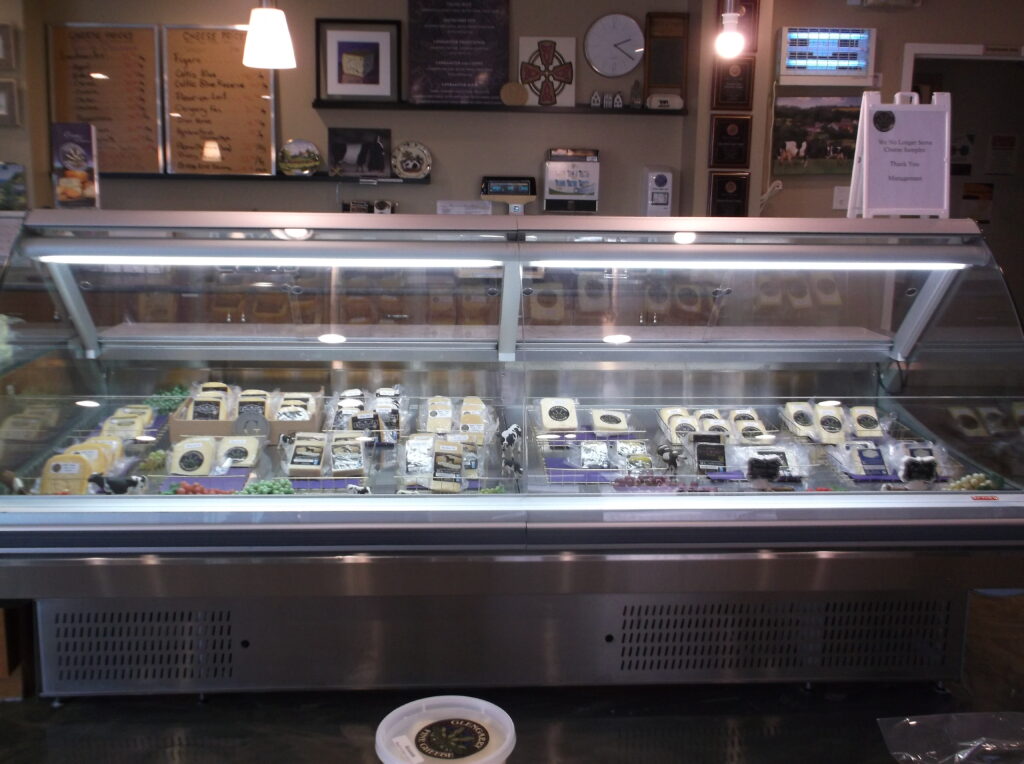
Turn south on CR 34 and back over Highway 401, turn east at Rob McIntosh’s shopping emporium, onto the S. Service Road to Glengarry Park. Here, nestled amongst the trees, you will find St, John the Evangelist Church, which is to my mind the finest and most complete example of late 19th century “arts and crafts” architecture in E. Ontario. The church and parish hall were built to the memory of former Glengarry M.P. and business man John McLennan by his family.
Photo 2 – Affectionately known as “The Church in the Wildwood,” the rustic and structural integrity of this building made of local stone and wood and capped with exposed beams and rafters defines this as an “arts and crafts,” style structure. I suspect it had or still has stained glass windows.
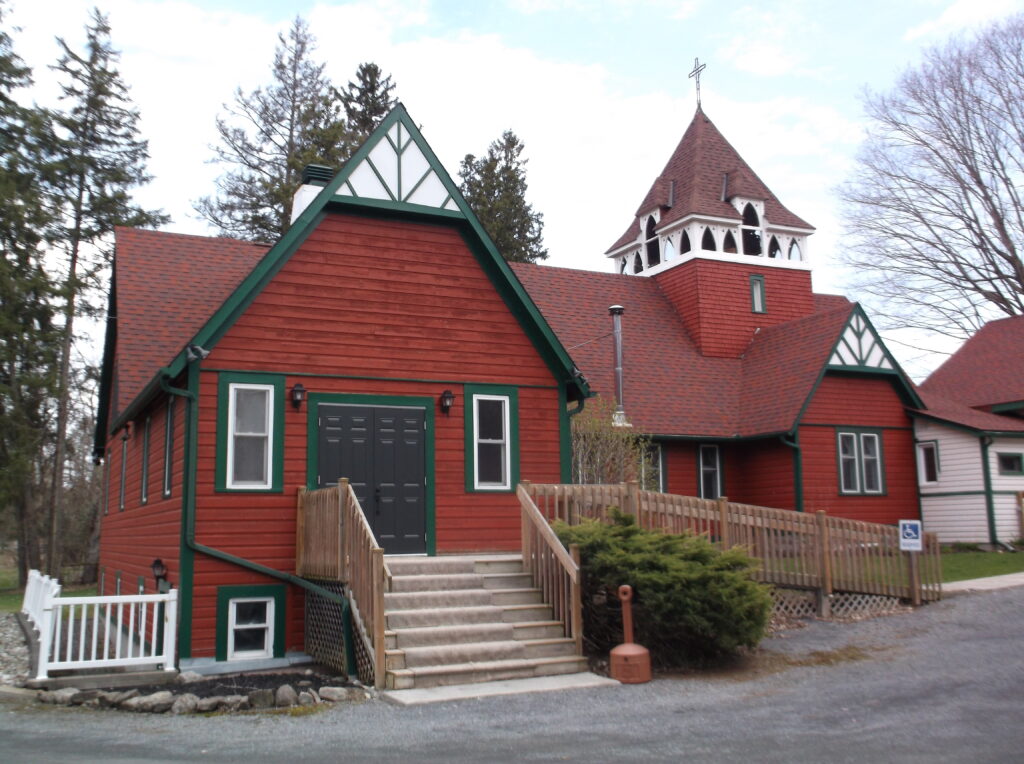
Photo 3 – Strict adherence to various styles was often ignored, by builders who would frequently add something from another era such as this round “Queen Anne,” tower in the centre of the photograph.
Return to the Service Road and continue east to CR 23 and go north, past CR 18. Through a quirk in provincial politics, you will enter small slice of Quebec, turn east again to Dalhousie Station and then left across the railway tracks where you will see the only complete train water tower( minus spigot), remaining out of the more than 40 that once dotted Eastern Ontario.
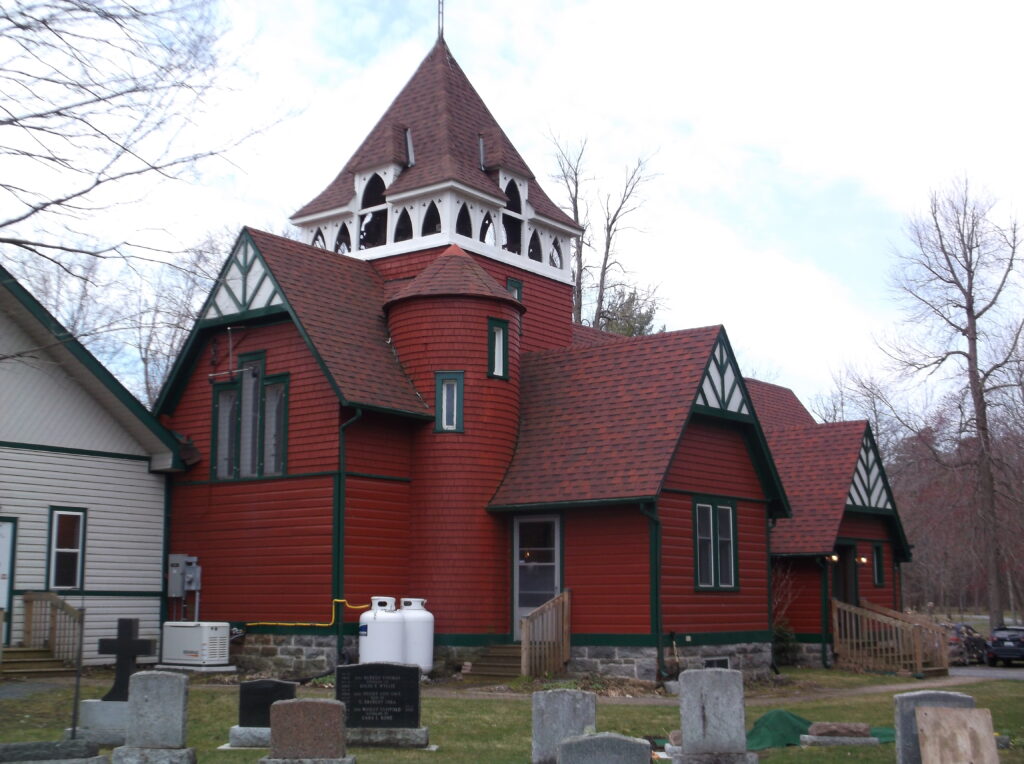
Photo 4 – The Canadian Pacific Railway opened a station here in 1884 and built this tower to provide water for the steam locomotives that pulled their trains.
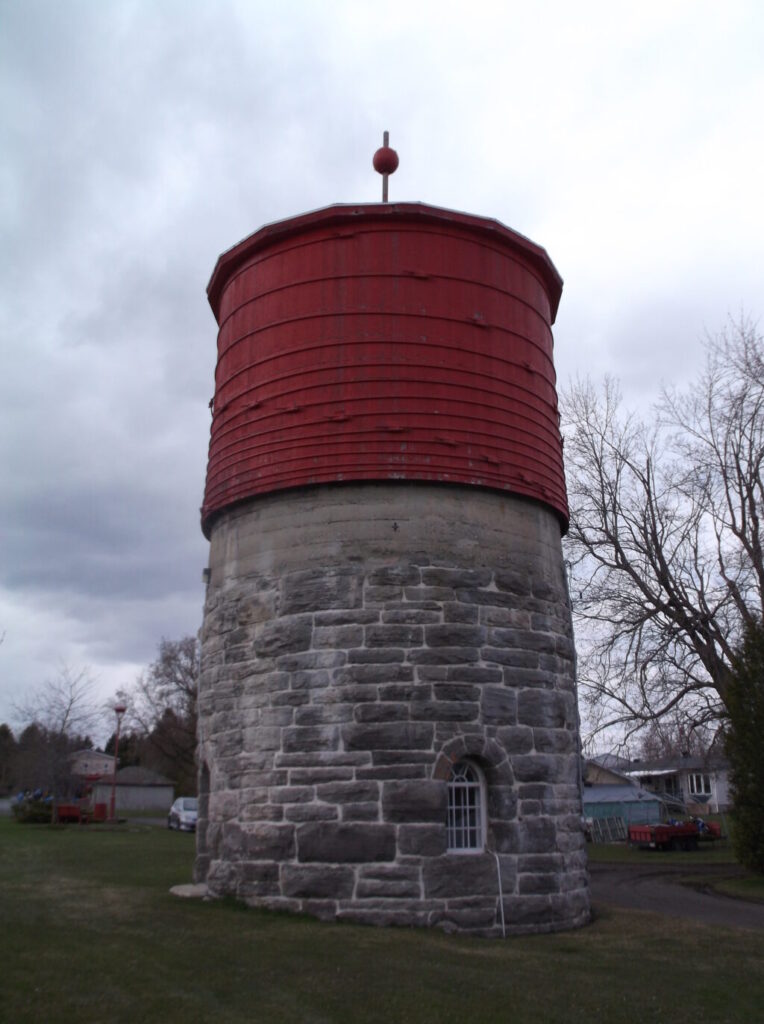
Continue north back into Ontario to Dalhousie Mills, until you see Round Church Drive on the west side.
Photo 5 – St. Andrew’s United Church. Known as the Round Church, this octagonal church was built in 1869. According to tradition it was constructed without corners to deprive the devil anywhere to hide. It is only one of four round churches on Canada.
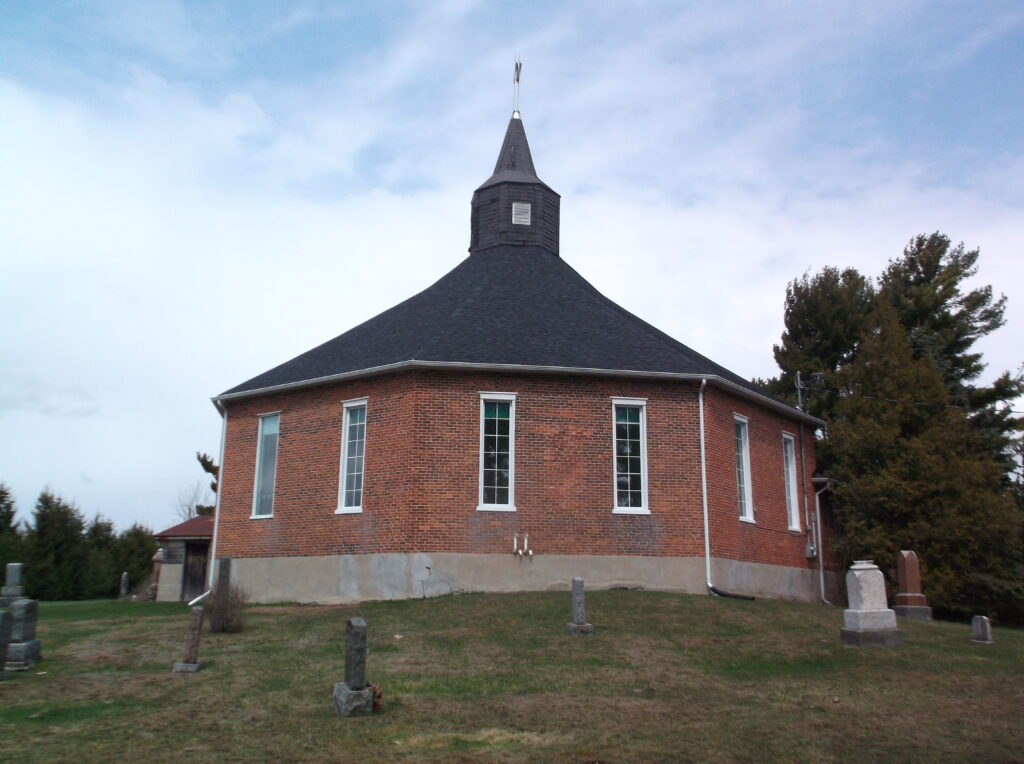
Continue north on 23, through Glen Robertson, Glen Sandfield to Dalkeith. When you get to Dalkeith keep going for another 100 metres, and to your right you will see the Robertson-Clark Building, one of the area’s most interesting repurposed buildings, and now a museum. Built in 1867, as a general store and post office by William Robertson, after the business closed, it was purchased by members of the local Catholic population in 1913, to be converted into St. Paul’s Roman Catholic Chapel. Overtime the Parish and the Church grew with the addition of a sacristy. A dwindling rural population led to its closure in 2007. Decorated with some of the best remaining wall stencilling in Ontario, the building was saved by the Dalkeith Historical Society, who now operate a rural and military themed seasonal museum.
photo 6 – The Robertston-Clark building as a Church. (Photo courtesy, Dalkeith Historical Soc.)

For added interest, take the road north to the banks of the Rigaud River, where the settlement was founded in 1811, and then according to tradition rolled “lock, stock and cabin,” up-hill to its present site, to escape spring floods.
Return to CR 24, then south on 34 to Alexandria. Here the lactose intolerant members of your crew can visit Fauxmagerie Zengarry, in the former armoury, to sample their cashew nut based cheese, before visiting Priest’s Mill Art Centre, or discovering your family’s heritage at the Glengarry County Archives housed in a structure dating to 1822, at 28 Kenyon St.
Fauxmagerie Zengarry .
If you visit during the summer months be sure to cool off at Alexandria’s Island Park Beach, or if you are in need of a stretch, take a walk along one of the four surrounding Glengarry Trails.
The 3.6 km long Garry Fen Trail, just west of Alexandria, takes you through a mature forest to a boardwalk that “immerses” you into the Fen, is my favourite for diversity alone.
Now take CR 34 back to Lancaster for a well earned perch-roll dinner or anything else (their Western Sandwich is the best I have tried anywhere) at BOURDEAU’S
Be sure to check opening times for those locations that are open to the public before setting out to avoid disappointment.



